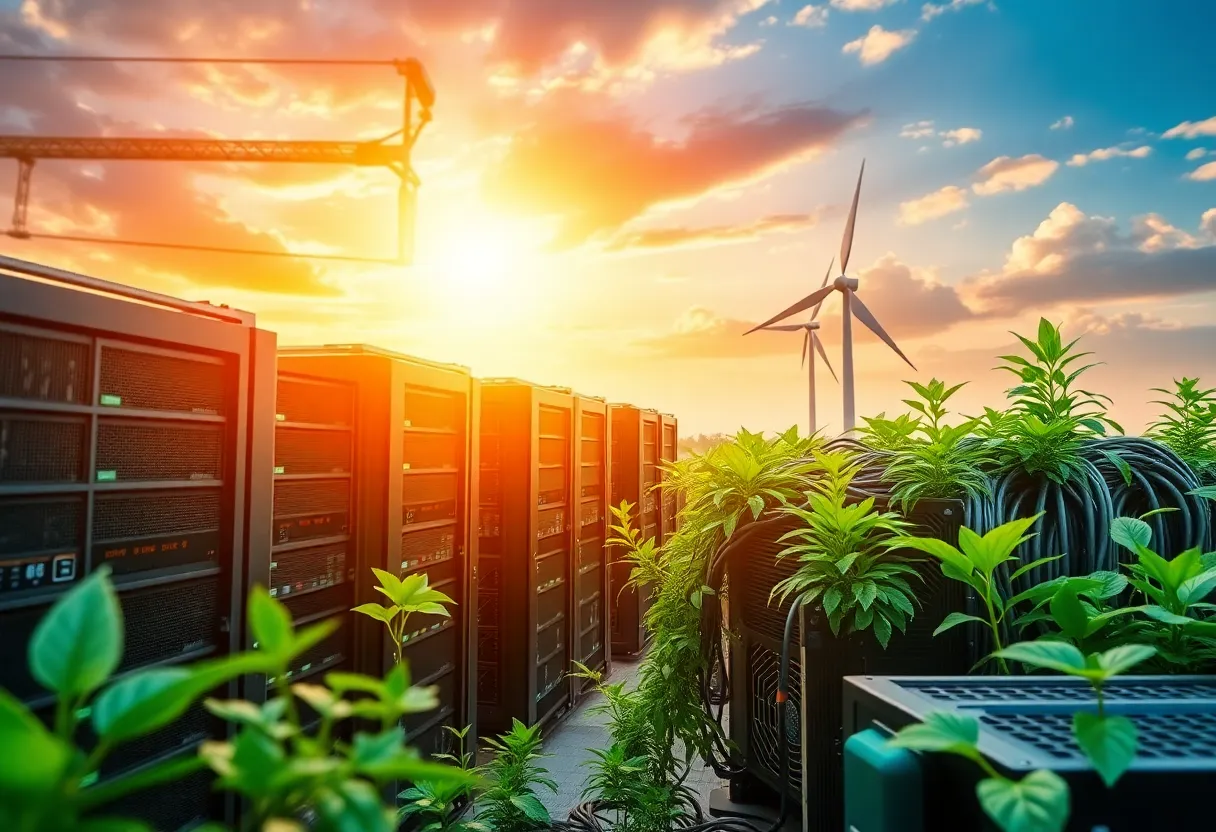Albany, NY, October 15, 2025
A new bill proposed by Assemblymember Anna Kelles seeks to impose an excise tax on cryptocurrency mining operations in New York. The legislation targets large-scale facilities that consume significant energy, particularly in upstate regions like Buffalo. The tax aims to address environmental concerns related to high energy use, with revenues directed toward renewable energy initiatives. As crypto businesses watch closely, this proposal may influence the future of mining practices in the state.
New York Assemblymember Introduces Crypto Mining Excise Tax Bill
Albany, NY – A new legislative proposal in New York aims to place an excise tax on cryptocurrency mining operations to curb their high energy use and lessen environmental harm. The bill, introduced by Assemblymember Anna Kelles, focuses on large-scale, power-intensive facilities, particularly those in upstate areas, including spots near Buffalo in Western New York. If passed, the tax revenue would go toward boosting renewable energy projects across the state.
Key Details of the Proposed Legislation
The excise tax targets facilities that consume massive amounts of electricity to power the computers used in mining digital currencies like Bitcoin. These operations often run 24/7, drawing from the state’s power grid and raising concerns about rising energy costs and carbon emissions. The bill specifically zeroes in on high-power setups in upstate regions, where cooler climates and available land make mining attractive. Sites near Buffalo, part of Western New York, could face direct impacts if the law takes effect.
Under the proposal, the tax would apply to operations exceeding certain energy thresholds, calculated based on their monthly electricity usage. This approach seeks to discourage inefficient mining while encouraging companies to adopt greener practices. The funds collected would support initiatives like solar and wind energy development, as well as grid upgrades to handle renewable sources better. Lawmakers view this as a way to turn the environmental burden of crypto mining into a resource for sustainable progress.
Focus on Upstate New York and Western Regions
Upstate New York has seen a rise in crypto mining interest due to its relatively low electricity rates compared to other parts of the country and the presence of former industrial sites that can be repurposed. Facilities near Buffalo, in areas like Tonawanda or Niagara County, are prime candidates for such operations because of proximity to hydroelectric power from Niagara Falls. However, this growth has sparked debates over whether the benefits of tech jobs outweigh the strain on local energy supplies.
The bill’s emphasis on these areas reflects broader concerns about energy equity. Rural and upstate communities often bear the brunt of industrial energy demands without seeing proportional economic gains. By taxing large miners, the legislation aims to redistribute some benefits back into the region through renewable investments, potentially creating jobs in clean energy sectors and reducing reliance on fossil fuels for power generation.
Reactions from the Crypto Industry
Cryptocurrency businesses operating or planning to operate in Western New York are keeping a close watch on the bill’s progress. Many see it as a potential hurdle to expansion, as the added tax could increase operational costs and make the region less competitive for mining. Some companies have invested heavily in local facilities, expecting stable energy prices and supportive policies. The proposal prompts them to evaluate shifts toward more energy-efficient mining hardware or even relocating to states with fewer regulations.
Despite the concerns, the industry recognizes the push for sustainability as part of a larger national trend. Other states, like Texas and Georgia, have already grappled with similar issues, leading to voluntary energy-saving measures by miners during peak demand periods. In New York, the bill could set a precedent, influencing how crypto firms balance profitability with environmental responsibility.
Background on Crypto Mining’s Energy Challenges
Cryptocurrency mining involves solving complex mathematical puzzles to validate transactions on blockchain networks, a process that requires specialized computers known as ASICs. Each mining rig can consume as much electricity as a household, and large-scale operations often rival the energy use of small cities. Globally, Bitcoin mining alone accounts for a significant portion of electricity consumption, comparable to the annual usage of countries like Argentina.
In the U.S., the crypto boom since 2020 has led to increased scrutiny, especially as climate goals intensify. New York’s proposal aligns with federal discussions on regulating high-energy industries. The state’s clean energy standard, which mandates 70% renewable electricity by 2030, provides context for why lawmakers are acting now. Previously abandoned power plants in upstate areas, once used for manufacturing, are being eyed for mining, but this reuse risks undermining green energy targets if not managed carefully.
The bill’s introduction comes at a time when Western New York’s economy is diversifying. Recent business developments, such as the pending sale of the Sumitomo Rubber site in Tonawanda to a Taiwan-based manufacturer for an industrial park transformation, highlight the region’s appeal for heavy industry. Similarly, Ingram Micro’s move to downtown Buffalo signals tech growth, but crypto mining’s energy intensity sets it apart. Lawmakers hope the tax will guide this sector toward sustainability without stifling innovation.
Stakeholders expect the bill to move through committees in the coming months, with public hearings likely to feature input from environmental groups, energy providers, and industry representatives. As New York balances its tech ambitions with environmental priorities, this legislation could shape the future of digital economies in the state.
FAQ
What is the purpose of the new excise tax on cryptocurrency mining in New York?
The tax aims to address high energy consumption and environmental impact from cryptocurrency mining operations.
Who introduced the cryptocurrency mining tax bill?
New York Assemblymember Anna Kelles introduced the legislation.
Which areas does the bill target?
The bill targets high-power facilities in upstate regions, including potential sites near Buffalo in Western New York.
How will the revenue from the tax be used?
Revenue would fund renewable energy initiatives.
How are crypto businesses responding to the proposal?
Crypto businesses in Western New York are monitoring the proposal closely for operational implications.
Key Features of the Cryptocurrency Mining Excise Tax Bill
| Feature | Description |
|---|---|
| Tax Type | Excise tax on high-power cryptocurrency mining operations |
| Target Regions | Upstate New York, including potential sites near Buffalo in Western New York |
| Primary Goal | Address energy consumption and environmental impact |
| Revenue Use | Fund renewable energy initiatives |
| Introducer | Assemblymember Anna Kelles |
| Industry Impact | Crypto businesses in Western New York monitoring for operational implications |




